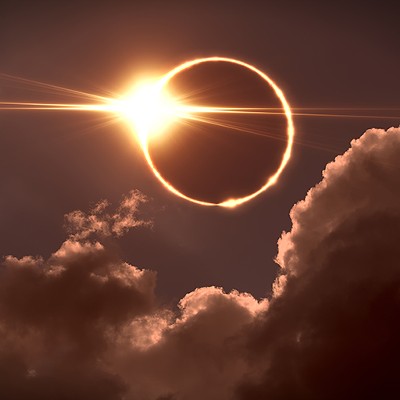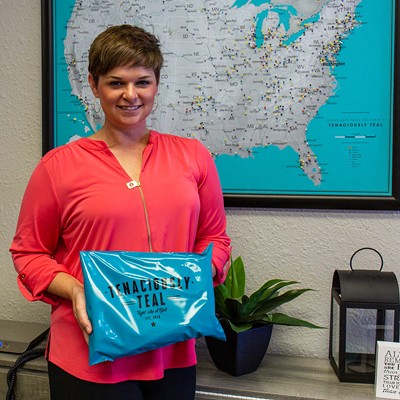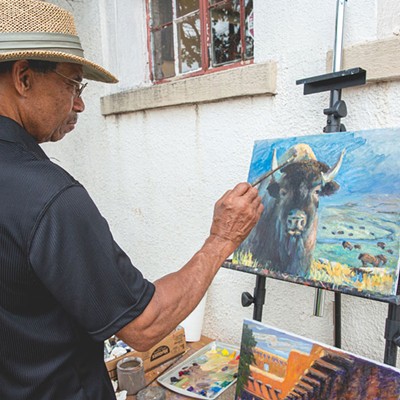
“I wanted to make a difference,” Bagley said. “When I make art, I try to find impoverished materials that people would think are useless.”
You might not have seen the sculpture that sits in Midtown at the intersection of NW 10th Street and Hudson Avenue. (Maybe you’re too busy avoiding other drivers at the roundabout.) But the huge chairlike structure is hard to miss; it’s over 10 feet tall and seven feet wide with a bell on top. The title of the piece is Looking Glass Prairie, and all the materials that went into making it were saved from the landfill.
The sculpture features analogue weather gauges and antique gas lanterns. The backing is made of the remnants of die-cut metal, and the effect is almost delicate — the huge piece of sculpture is a latticework of framing.
Bagley rescues his materials from all over. The wood he has used in two of his most recent pieces, including Looking Glass Prairie, came from demolition sites around downtown Oklahoma City. When the construction began for the extension of Interstate 40, quite a few buildings downtown had to be demolished.
“Most of those buildings were built in the 1950s, and they were all new growth, most of it Douglas fir,” Bagley said. “They were literally paying to have it dumped in a hole in the ground.”
Bagley saw potential in that wood, and it was too beautiful to pass up. He said that no one even challenged him when he took it. With a coat of clear varnish and Bagley’s transformative powers, what was destined for disposal became art.
Another piece, titled Solar Eclipse, was recently on display in the Hart building on Film Row. That sculpture is another large work, an elaborate wood, bronze and steel sculpture with a Chinese (chau) gong centerpiece. It represents a complete solar eclipse from beginning to end, both visually and by the length of time the gong rings. Bagley said in a press release it is “meant as a tool to assist in meditation practice.” It, too, is almost entirely made of reclaimed materials.
When Bagley is creating a new piece, he works from several locations. He has an actual desk at SLIVR, a collective that houses engineers and designers on Film Row. He also works out of his backyard, and when his work demands a larger space, he rents it from Hugh Meade at Oddfab Design Lab, another design collective in OKC. Oddfab is where he helped create the tricycle that represented Oklahoma City Energy Football Club in OKC’s St. Patrick’s Day Parade.
Bagley does both commissioned works as well as labors of love. He was pleasantly surprised when Midtown Renaissance wanted to purchase Looking Glass Prairie.
“I had imagined putting it somewhere along the original Chisholm Trail or keeping it,” he said. “But who am I kidding? I want to keep them all.”
Now the sculpture sits in a public place where the community can enjoy it. He hopes Solar Eclipse will one day do the same.
Bagley has done work in OKC and in Arizona, and he has commissioned for Burning Man, a summer festival in the Nevada desert in which large sculptures are constructed and then destroyed. The materials for his sculpture at the 2007 festival were repurposed as well. His particular interpretation was an examination of reincarnation by giving discarded materials a new life — appropriate for an artist who breathes life into materials that would otherwise have reached the end of their road.












